What I Use, Part 1
17 Sep 2011One way you can tell a geek is by looking at their setup. Setup is not just computer, OS and applications, but all surrounding elements that they use on daily basis. And it’s not the elements of that setup that makes it unique but rather how they come together and the story behind each element.
Here’s my humble attempt to describe mine.
Hardware
I prefer desktops to laptops. For me, if you’re not using the portability of a laptop, then you’re just wasting money on an expensive piece of hardware that you can’t upgrade and risk void its warranty just by trying to open it up. While desktops are huge compared to laptops and need their own desk, they’re cheaper, easily upgradable, and can’t be left on the bus. Also, desktops are very durable. I’m in my fourth year with this machine and it’s still working very well. Yes, it has received multiple upgrades but from the outside it all looks the same.
Case
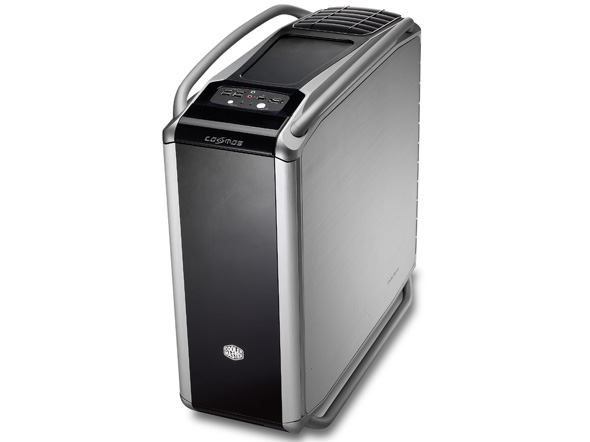 I use a Cooler Master 1000 box for my own machine. Standing in the store picking this box is a bit difficult because you don’t really realize the benefit of getting such a big box with an expensive price tag, but let me tell you, it’s worth every penny. It’s not just how quite and cool it is, and not just that it had fit all my upgrades, but it’s the little things too. I can easily tear it down, clean it up and put it back together in 2 hours, something that I like to do once every 6 months.
I use a Cooler Master 1000 box for my own machine. Standing in the store picking this box is a bit difficult because you don’t really realize the benefit of getting such a big box with an expensive price tag, but let me tell you, it’s worth every penny. It’s not just how quite and cool it is, and not just that it had fit all my upgrades, but it’s the little things too. I can easily tear it down, clean it up and put it back together in 2 hours, something that I like to do once every 6 months.
The Cooler Master comes with screwless doors and hard drive bays, removable air filters, and two long metal handles for carrying it around, not that you have to, it’s a 38 lbs box, so you might want to avoid carrying it.

Processor
While I love AMD, and think that it’s very competitive with Intel. I got a very good deal on my Intel Core 2 Quad Q9300 (overclocked to 3.0 GHz) which was almost the latest when I got it. My strategy when getting hardware is to get the latest item when it comes to components that are long term like processors. You’re not gonna change your processor every year or two, it’s something that should live for 4 to 5 years on a day to day machine and then be moved to a secondary machine for the next 5 years. So, you get the latest product within your price range and 3 years later it’s still as powerful as the new line of products.
The Core 2 Quad is setting on top an ASUS Maximus RoG (Republic of Gaming) motherboard. It has excellent overclocking capabilities and great bios software, with great audio card, and plenty of all forms of ports (USB, and external SATA).
Memory
I’ve started with 2 x 2GB of Corsair DDR3 RAM overclocked to 1600 MHz, I’ve followed with another 2 x 2GB to take full advantage of all slots and offer enough RAM for hosted VMs.
Graphics Card
I can’t really brag too much about the Graphics card, an ATI Radeon HD 3800, because by the time you pick a graphics card and the time you reach the store to buy it, there’s already a graphics card that has been released that makes yours seems old. What I can do is say that this ATI Radeon card has worked and is still working great for me.
Hard Drive
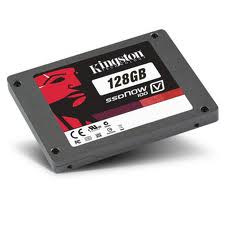 The only thing I don’t have from the original computer that I assembled more than 3 years ago is the hard drives. All gone and replaced with new ones. Data grows at an unreasonable rate and the falling prices of hard drives tempt you into following the rule of “Don’t Delete Anything”.
The only thing I don’t have from the original computer that I assembled more than 3 years ago is the hard drives. All gone and replaced with new ones. Data grows at an unreasonable rate and the falling prices of hard drives tempt you into following the rule of “Don’t Delete Anything”.
My main backup strategy was to use RAID. If I’m gonna need a hard drive to store a copy of my data as a backup, then I would just get two of the same hard drive, make them a mirror of each other and in the process get a faster reading speed. This plan worked great to protect against hard drive failure which actually happened when one drive failed and was replaced with all data not affected. One flaw with this plan though, when I accidently chose the wrong drive when installing a new Windows, I wiped out not only the hard drive but also its mirror. In the span of the 7 seconds it took me to realize the stupid mistake that I’ve made, I had lost the partition table on both drives, and basically the map to all my data. I was able to recover my data sector by sector in a very long and painful process but the marks are still on the wall from where I banged my head as a punishment. Now, I’ve removed the RAID and just use SyncToy to sync between the two mirrors once a day to protect from hard drive failure and accidental stupidity.
I use a 120GB Kingston SSDNow V+100 Sold State Drive for my OS drive. The idea is always to totally separate Windows from your data. I don’t ever use “My Documents” or the desktop to store any important data (or really any data at all). The idea is that the OS can go at anytime. You can update Windows after installing this beta software and boom it’s BSOD and you can’t even go into the safe mode to figure out what the problem is. Backup will help you but restoring a 60GB of Windows is much easer than restoring 1TB of Windows and data just to get Windows working again.
I use a solid state drive only for the OS since they’re very expensive. However, the effect they have on boot time and startup time of applications is obvious to the naked eye. I’m still not comfortable moving to SSDs for storing data. The idea of hard drives failing without any warning signs is worrying. I’m too accustomed to physical hard drives to move to SSDs. Of course all these worries will disappear when SSDs are affordable because the difference in performance is just that obvious.


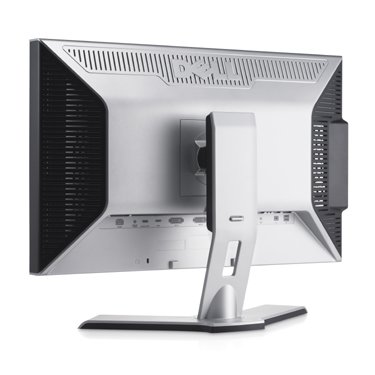
Monitors
One thing that laptops can’t beat for sure is multiple monitors and monitor size. I use two Dell WFP wide screen series monitors. One is 24” and the other 22”. I was surprised to know that Dell makes the best monitors but it’s true. However, I have to say that the 24” is much better than the 22”. I don’t mean in terms of size but rather color. For some reason, the white (the most obvious example) is not quite the same on the two screens. Maybe it’s the settings but I think it’s a slight difference in the model. Advice: if you want to get two or more monitors, try to get the same monitor, even if it’s not the best quality, but the consistency between the different monitors is worth it.
One thing I really like about these Dell monitors is the adjustable handles. You can change height, rotation, tilt without moving the base. One thing I hate about these monitors is that they make me hate my work monitor. Getting used to using two monitors with certain setup and quality makes other monitors seem awful.
Mouse and Keyboard
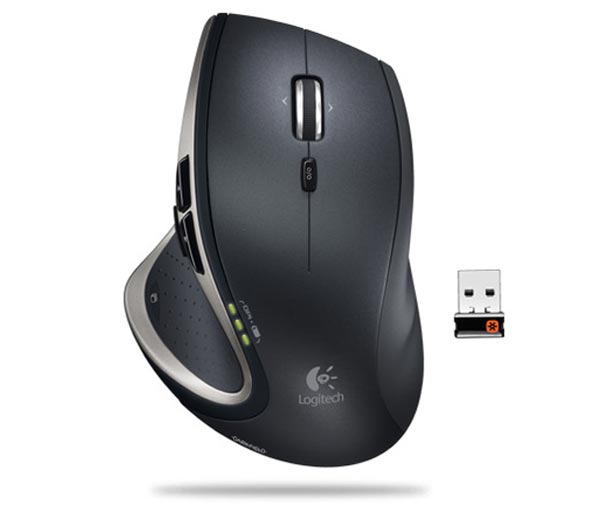 Logitech is your best friend here. Microsoft makes a noble effort and always comes out with new good products, but I’m super picky about the mouse and keyboard. I need to not looking at them at all and I need to do shortcut as much stuff as possible.
Logitech is your best friend here. Microsoft makes a noble effort and always comes out with new good products, but I’m super picky about the mouse and keyboard. I need to not looking at them at all and I need to do shortcut as much stuff as possible.
I use a Logitech Performance Mouse MX with (an impressive) 10 buttons. Only 9 of them are programmable with 1 button physical button for fast scrolling. However, it works great for browsing, you don’t need a keyboard for going back and forward. It also works great as a remote control for media player with volume control (up, down and mute) and Play/Pause control. You’ll have to use Logitech software to program these buttons because this is not the default setting. I’ve tried so many settings until I settled on this one and you can come up with your own of course.
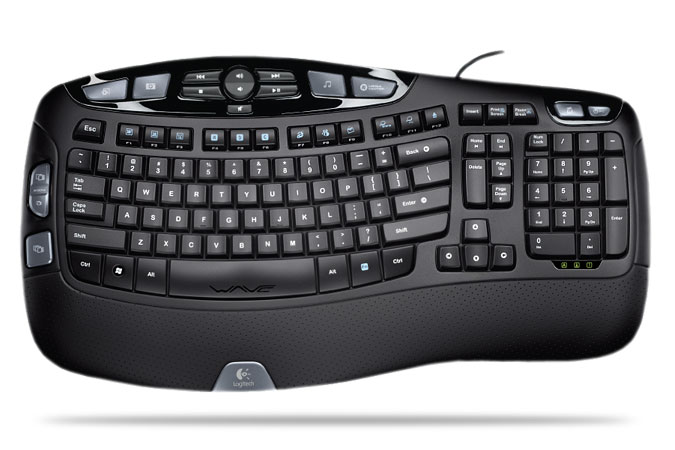
Logitech completes the comfort to my fingers with Logitech Wave. While it’s not cordless, I love the rubber pad below the keyboard where I could rest my hands. I takes a while to get used to the Home/End/Delete buttons of this keyboard and sometimes confuses you when you switch to another keyboard with two rows of 6 buttons but you’ll get used to it.
I don’t really use the programmed keys because I never got used to using them not on this keyboard or any other really.
Recently, I’ve switched to Microsoft Comfort Desktop 5000 which have a very nice wireless keyboard that is much quitter than the Logitech, but I’m not too crazy about the mouse. Still, nothing beats a 10-buttons mouse.
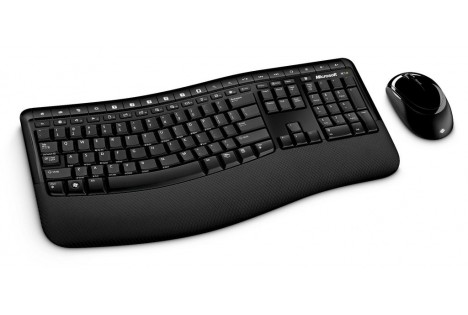
I have another PC that I use as a file server and to store my backups. AMD is the perfect balance between getting stuff done and doing it on the cheap.
Phone
 Some people think it’s tough being a Windows Phone guy. You’re surrounded by a lot of iPhone, Android and Blackberry fan boys who can’t stop telling you how great their phones are. For me, even though I’m surrounded by those people (the only people I know who have a Windows Phone are on Twitter). However, it’s really easy having a Windows Phone. It plays really well with all the Microsoft services that I use. But more importantly, I think that Microsoft struck a nice balance between iPhone and Android. WP7 (Windows Phone 7) is easy to use and fast like an iPhone and is open and easy to develop to like Android. Before you hate me for comparing WP7 to your favorite mobile platform, I’m just saying that it’s taking the best of both worlds and not copying anyone. Actually, one thing I really like about WP7 is that it didn’t copy iPhone UI which was super cool when it first came out but now is very old compared to the Metro UI of WP7.
Some people think it’s tough being a Windows Phone guy. You’re surrounded by a lot of iPhone, Android and Blackberry fan boys who can’t stop telling you how great their phones are. For me, even though I’m surrounded by those people (the only people I know who have a Windows Phone are on Twitter). However, it’s really easy having a Windows Phone. It plays really well with all the Microsoft services that I use. But more importantly, I think that Microsoft struck a nice balance between iPhone and Android. WP7 (Windows Phone 7) is easy to use and fast like an iPhone and is open and easy to develop to like Android. Before you hate me for comparing WP7 to your favorite mobile platform, I’m just saying that it’s taking the best of both worlds and not copying anyone. Actually, one thing I really like about WP7 is that it didn’t copy iPhone UI which was super cool when it first came out but now is very old compared to the Metro UI of WP7.
I have a Samsung Focus phone which is super light and has a great screen.
This post was supposed to describe all my setup, but it ran very long so I’ll break into multiple posts. This was most of my hardware, next up will be the software. Hopefully soon.
I wrote about software and tools in Part 2.

